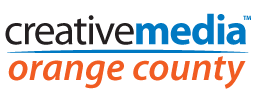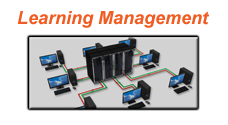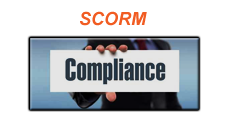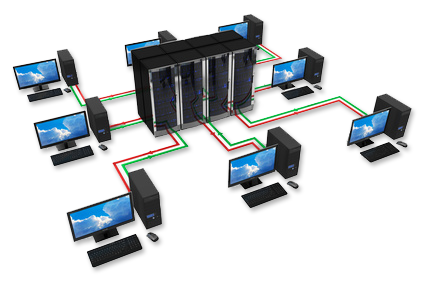-
Computer-based instruction (CBI)
-
Computer-based training (CBT)
-
Computer-assisted instruction (CAI)
-
Technology-enhanced learning (TEL)
-
Internet-based training (IBT)
-
Web-based training (WBT)











eLearning Essentials
eLearning is
defined as the use
of electronic media, information, and communication
technologies in education. Skilled designers typically
create learning content as interactive, digital training
materials, delivered to students (primarily) via the Internet,
with additional
options
for delivery including internal intranets, social media, discreet audio/video files,
and CD- and DVD-ROM.
eLearning is also commonly referred to as:
Computer-based instruction (CBI)
Computer-based training (CBT)
Computer-assisted instruction (CAI)
Technology-enhanced learning (TEL)
Internet-based training (IBT)
Web-based training (WBT)
Online education
Virtual learning environments (VLE)
m-learning (mobile)
Multimedia learning
Digital educational collaboration
Distributed learning
Whether delivered
in or out of the classroom, an eLearning may be
self-paced, instructor-led, or a combination of both. It's
well-suited to distance learning and flexible learning requirements,
but can also be used in conjunction with in-person teaching, referred to as blended learning.
![]()
The combination of face-to-face classroom methods with electronic activities results in a more integrated approach for both instructors and students. Also referred to as hybrid-learning, technology-mediated instruction, web-enhanced or mixed-mode instruction, “Blended learning” refers to the use of multiple educational modalities within a single unit of study.
Blended learning is commonly used to describe courses which involve both instructor-led and online learning components; traditional classroom time is reduced but not completely eliminated. Studies demonstrate that while the overall effectiveness of online instruction is equivalent to that of instructor-led classroom training, it is not as effective as the combination of face-to-face instruction with online learning methods.
Learning management systems are used for delivering, tracking, and managing training and education courses, for example:
tracking attendance class-by-class, and student-by-student
monitoring time spent on individual tasks, or sets of tasks
documenting student progress through the classes that comprise a course
posting announcements for class management, updates, and alerts
managing quizzes, tests, and final exams
posting assignment grades
reviewing overall course activity
participating in class discussions and moderation of student forums
enabling student submission of work
providing a repository for lesson material and demonstration content
SCORM
Sharable Content Object Reference Model (SCORM) is a
collection of standards and specifications that specifically
applies to web-based eLearning and instruction. It defines
communications between client side content and a
host system
(“run-time environment”), commonly supported by a learning
management system.
SCORM is a specification of the
Advanced Distributed Learning
(ADL) Initiative, which originates from the Office of the United
States Secretary of Defense, also defining how content may be
distributed. Employing a concept called “sequencing”, SCORM
establishes a set of rules which specify the
order in which a
learner may experience various objects of content. Essentially,
these rules (1) restrict a learner to a fixed set of paths
through the training material, (2) permit the learner to
“bookmark” their progress when taking breaks, and
(3) assure the
acceptability of test scores achieved by the learner.
![]()
 Corporate
Learning
Corporate
Learning
eLearning has become the gold standard for companies
seeking an effective method to inform and educate both their
employees
and customers.
Businesses with large and diverse distribution chains benefit by
utilizing eLearning designers to create content that educates their sales and marketing staff on the
latest product developments or business compliance requirements without
the need to organize in-person, on-site courses. In addition, eLearning
has significant impact in the improvement of “staff development”
offerings, providing employees the resources needed to
continually learn new (and improve existing) workplace skills.
![]()
improved and open access to education
access to full degree programs
better integration for non-full-time students (particularly those in continuing education)
expanded interactions between students, instructors, and classmates
access to dynamic tools enables students to become independent problem solvers
enhancement of students' technological skills
Collaborative Learning
The developer's use of instructional methods designed to encourage or require students to work together on learning tasks, computer-supported collaborative learning (CSCL) is conceptually similar to the term “eLearning 2.0,” a term that arose with the social advances realized via “Web 2.0” technology, more specifically the sharing of information between multiple people online.
Additionally, after initial instruction on using collaborative learning tools, students gain an increased technological knowledge and comfort level, and are prepared going forward with these much-needed skills.

Distance learning is a method of delivering education and instruction to students who are not physically present in a classroom or lecture hall. Distance learning provides remote access to learning where the source of the information and the learners are separated by time and/or distance. Courses requiring a physical presence for any reason (including testing) are referred to as blended (or hybrid) learning.
The widespread use by eLearning designers of cutting-edge technology has made distance learning easier, faster, and extremely effective. Today’s virtual schools and universities offer broadly diverse and robust online curriculums.
Best Practices
The development of quality eLearning content is dependent on organized processes that encourage developers to take top-down approaches to content creation. Creative brainstorming sessions produce (1) the overall concept with maturity succession plans, (2) messaging and design direction, and (3) the key performance indicators which will drive the idea-through-execution lifecycle. Depending on the project's goals, certification requirements, and target delivery platform(s), the process can be complex, addressing multi-dimensional data structures and compliance requirements, or very simple, allowing developers to focus on tutorials, testing, and measurement. In general, content is explored and cultivated through a series of development phases, including:
Exploration (initial idea formation, creative brainstorming, format conception, constructive ideation, documentation)
Definition (functional outlining, process flowcharts, top-down structure, initial theme development)
Scoping (specifications defining form and function, channel targeting, life-cycle, phase structuring, production estimates)
Development (creative production, graphic design, interactivity, animation, platform, packaging)
Presentation (demonstration, display, review, theme enhancement)
Testing (user acceptance, functional analysis, focus group assessment, standards compliance, LMS integration)
Revision (concept improvements, corrections, refinements)
Delivery (fine-tuning, tagging, platform launch, release, monitoring)
Measurement (key performance indicators, real-time analytics, success metrics)
Reporting (detailed performance analysis, automated processes, notification alerts)
Refinement (program improvements, redirection, process growth, artistic redesign, creative refresh)
Support (frequently asked questions, discussion forums, program functionality, platform-specific assistance)
Tactics
Creating artistic, compelling, and meaningful content requires designers to possess a combination of creative, technical, and design skills to effectively navigate the complex, ever-changing technological landscape. Tactics used by designers to be “heard above the noise" center on creating unique, interactive, hands-on student experiences, stimulating curiosity by creating a veritable playground of learning and exploration. This content ecosystem is built using a variety of development solutions, from simple PowerPoint to eLearning conversion software to involved, highly-specialized programming environments. Significantly higher retention rates are achieved by continually engaging students in hands-on tutorials. Successful designers employ the following eLearning tactics:
Produce compelling visuals. Presentations containing attention-grabbing graphics have a significantly greater impact.
Create engaging interactivity. Engage your audience by creating hands-on demonstrations of processes and concepts, requiring study, thought, and interaction.
Design thoughtful animations. Express complex ideas by incorporating animated concept demonstrations.
Apply tasteful humor. Make it fun and entertaining to capture students' attention and relax the training environment.
Employ progress testing and final exams. Access knowledge transfer, retained understanding, concept references, and student status.
Performance measurement. Track opens, completes, progress barriers, and student reviews. Evaluate and refine overall training effectiveness.
These strategies provide designers a comprehensive approach to training effectiveness by integrating proven teaching methods with forward-thinking applications, in an ever-changing technological landscape.
